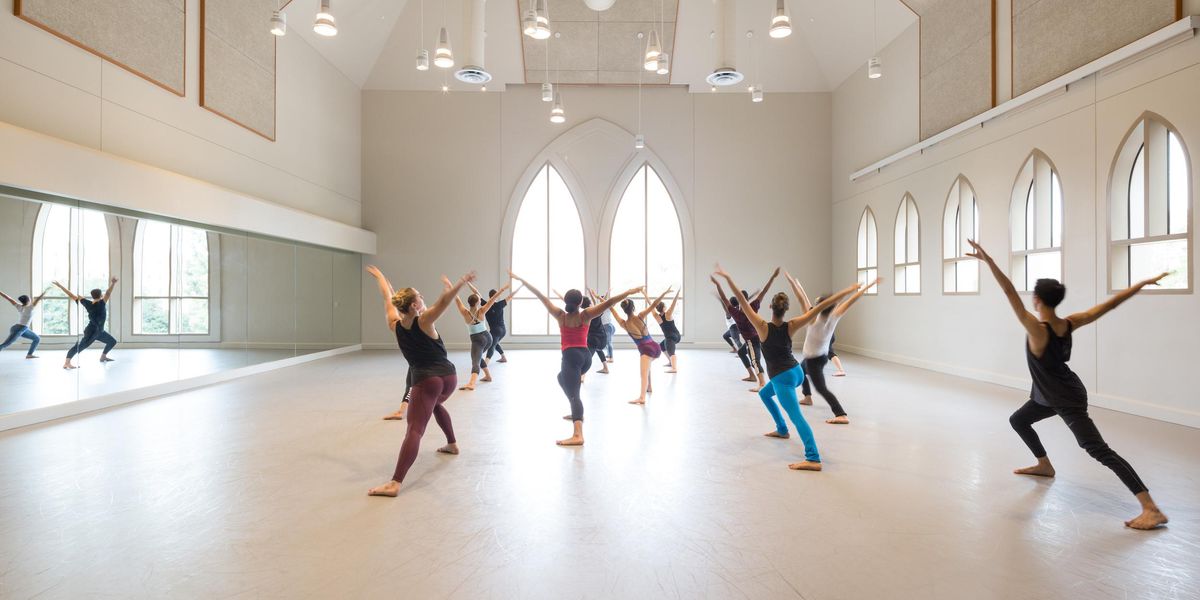Garth Fagan Dance
Brooklyn Academy of Music
Next Wave Festival
Brooklyn, NY
September 27–29, 2012
Performance reviewed: Sept. 28
This exceptional program of two Garth Fagan–Wynton Marsalis collaborations offered an abundance of sheer pleasure as well as rich food for thought. Not only was there the world premiere of Lighthouse/Lightning Rod—a true collaboration by two serious, mature, inspired artists who have known and respected each other’s work for decades—but also the chance to see it alongside a substantial portion of the pair’s landmark 1991 work, Griot New York, which also had its premiere at the Next Wave Festival. With the superb Wynton Marsalis Septet in the pit, the evening featured both music and dance that acknowledged the past through an insightful contemporary prism.
Griot
, well established in the repertoire and represented here by five of its eight sections, stunned anew with its effortless blend of urban vibrancy, sensual languor, and pristine formalism. The rich textures of Marsalis’ inventive, sophisticated score, sounding fresher than ever, both embody and transcend specific eras and locations. It alludes to the familiar while remaining consistently surprising. Fagan’s choreography shifts with ease from intimacy to surging ensemble energy as it journeys across harsh historical truths while sustaining a buoyant hopefulness.
Garth Fagan’s
Griot New York. All photos by Julieta Cervantes, courtesy BAM.
Lighthouse/Lightning Rod
ventures from fantastical to introspective to celebratory. More than two decades later (Marsalis is now the age that Fagan was when they first collaborated), they have created a work that is multi-layered and fascinating, if not always seamless in its transitions. Alison Saar’s majestic sculptures—most notably the elegant giantess, part fertility goddess, part embodiment of a lighthouse, who presides over the first section—evoke ritualistic figures, both ominous and protective.
In the dense, ever-evolving ensemble opening, “Lighthouse,” the dancers in their blue and purple costumes evoke an underwater society, Marsalis’ music is at its most lush and indolent here. It evolves and accelerates, its rhythmic punctuation propelling the dancers through overlapping progressions, often separating into trios. A central, three-part “Memory” section opens with a penetratingly introspective solo for the always eloquent Norwood Pennewell, then veers towards social commentary as Lindsay Renea and Shanon Castle, harmoniously connected, suggest the possibility of transcending the harsh allusions to slavery and exploitation surrounding them.
The music turns boisterously jagged in the concluding “Lightning Rod,” as silver lightning shapes hang overhead and decorate the black costumes. Familiar Fagan shapes take on a new looseness and wildness as the dancers find that distinctive poise and suspension amid the frenzy.
The program confirmed the depth and individuality of the current 16-member Fagan company, which has in the past often seemed very much the two-tiered troupe that the roster indicates. But now, while the established veterans—Pennewell, Natalie Rogers (making a most welcome return after eight years, without missing a beat), Nicolette DePass—continue to burnish their performances, younger talents such as Renea, Vitolio Jeune, and Khama Kgari catch the eye with their verve and distinctive attack, and the newer recruits already display strong presences.
Pictured at top: The opening section of
Lighthouse/Lightning Rod.




